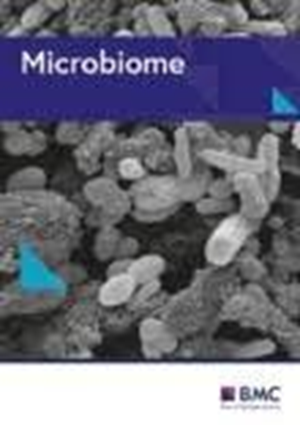混合生物废水处理系统中原核生物和噬菌体的分布、相互作用和动态变化
IF 13.8
1区 生物学
Q1 MICROBIOLOGY
引用次数: 0
摘要
了解生物废水处理系统中微生物群落的相互作用和动态对确保其稳定性和长期可持续性至关重要。在本研究中,我们采用多组学和 Hi-C 测序技术开发了一个系统框架,以广泛研究生物膜和活性污泥混合系统中的原核生物和噬菌体群落。通过分析 454 个重建的原核生物基因组,我们发现了功能性原核生物的独特分布模式、代谢能力和活动。此外,我们还利用杂交组装技术重建了由18,645个病毒操作分类单元(vOTUs)组成的噬菌体目录,其长度和连续性都很高,而且活性污泥(AS)和生物膜之间的噬菌体分布也截然不同。重要的是,利用 Hi-C 和传统的硅学方法建立了 1340 个宿主-噬菌体对,揭示了由宿主决定的噬菌体流行率。研究发现,大多数预测的宿主都参与了各种关键的代谢过程,这凸显了噬菌体在影响该系统内物质代谢方面的潜在重要作用。此外,还预测出了与不同类别(如碳水化合物降解、硫代谢、转运体)相关的辅助代谢基因(AMGs)。随后的活性分析强调了它们在感染期间介导宿主代谢的潜在能力。我们还利用 13 个月的时间序列元基因组数据分析了噬菌体及其相关宿主的时间动态,进一步证明了它们之间的紧密互动。值得注意的是,我们观察到了特定品系的感染模式,如宿主丰度或噬菌体/宿主比例驱动的噬菌体种群变化。这项研究获得的洞察力为围绕宿主-噬菌体的相互作用和动态不断增长的知识体系做出了贡献,并为微生物生态学领域的进一步探索和潜在应用铺平了道路。本文章由计算机程序翻译,如有差异,请以英文原文为准。
Distributions, interactions, and dynamics of prokaryotes and phages in a hybrid biological wastewater treatment system
Understanding the interactions and dynamics of microbiotas within biological wastewater treatment systems is essential for ensuring their stability and long-term sustainability. In this study, we developed a systematic framework employing multi-omics and Hi-C sequencing to extensively investigate prokaryotic and phage communities within a hybrid biofilm and activated sludge system. We uncovered distinct distribution patterns, metabolic capabilities, and activities of functional prokaryotes through the analysis of 454 reconstructed prokaryotic genomes. Additionally, we reconstructed a phage catalog comprising 18,645 viral operational taxonomic units (vOTUs) with high length and contiguity using hybrid assembly, and a distinct distribution of phages was depicted between activated sludge (AS) and biofilm. Importantly, 1340 host-phage pairs were established using Hi-C and conventional in silico methods, unveiling the host-determined phage prevalence. The majority of predicted hosts were found to be involved in various crucial metabolic processes, highlighting the potential vital roles of phages in influencing substance metabolism within this system. Moreover, auxiliary metabolic genes (AMGs) related to various categories (e.g., carbohydrate degradation, sulfur metabolism, transporter) were predicted. Subsequent activity analysis emphasized their potential ability to mediate host metabolism during infection. We also profiled the temporal dynamics of phages and their associated hosts using 13-month time-series metagenomic data, further demonstrating their tight interactions. Notably, we observed lineage-specific infection patterns, such as potentially host abundance- or phage/host ratio-driven phage population changes. The insights gained from this research contribute to the growing body of knowledge surrounding interactions and dynamics of host-phage and pave the way for further exploration and potential applications in the field of microbial ecology.
求助全文
通过发布文献求助,成功后即可免费获取论文全文。
去求助
来源期刊

Microbiome
MICROBIOLOGY-
CiteScore
21.90
自引率
2.60%
发文量
198
审稿时长
4 weeks
期刊介绍:
Microbiome is a journal that focuses on studies of microbiomes in humans, animals, plants, and the environment. It covers both natural and manipulated microbiomes, such as those in agriculture. The journal is interested in research that uses meta-omics approaches or novel bioinformatics tools and emphasizes the community/host interaction and structure-function relationship within the microbiome. Studies that go beyond descriptive omics surveys and include experimental or theoretical approaches will be considered for publication. The journal also encourages research that establishes cause and effect relationships and supports proposed microbiome functions. However, studies of individual microbial isolates/species without exploring their impact on the host or the complex microbiome structures and functions will not be considered for publication. Microbiome is indexed in BIOSIS, Current Contents, DOAJ, Embase, MEDLINE, PubMed, PubMed Central, and Science Citations Index Expanded.
 求助内容:
求助内容: 应助结果提醒方式:
应助结果提醒方式:


